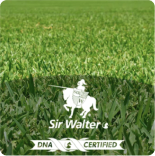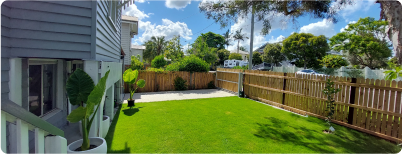Aerating: Your Lawn's Secret Weapon Against Fungal Diseases
Fungal diseases can turn your once-lush green lawn into a nightmare of brown patches and wilting grass. While it might not be immediately obvious, one of the best defenses against these pesky lawn invaders is aeration.

Here's how aeration can help combat fungal diseases in your lawn:
Improved Air Circulation: Fungal diseases love damp, stagnant conditions. When your soil is compacted and lacks proper aeration, it traps moisture and inhibits air circulation. Aeration breaks up compacted soil, allowing air to reach the roots and encouraging the evaporation of excess moisture.
Disease Prevention: Aerated lawns are less prone to fungal diseases because they create an environment where fungi struggle to thrive. By promoting a drier, well-ventilated soil profile, aeration reduces the moisture levels that fungi require to reproduce and spread.
Enhanced Fungicide Effectiveness: If you're using fungicides to combat lawn diseases, aeration can make them more effective. With improved soil penetration, fungicides can reach the roots more easily, providing better protection for your grass.
Thatch Reduction: Excessive thatch buildup can create a haven for fungal pathogens. Aeration helps break down thatch, reducing the chances of disease development.
In summary, aeration isn't just about improving the overall health of your lawn, it's also a powerful ally in the fight against fungal diseases. By enhancing air circulation, reducing moisture, and promoting better fungicide absorption, a well-aerated lawn can resist and combat these lawn-damaging invaders. So, grab that aerator and give your lawn the defense it needs to stay healthy and disease-free!
Here are some tips for aerating your lawn!
- Know Your Grass Type: For Warm-season grasses like Couch, Zoysia, and Buffalo the best time to aerate is usually in mid to late spring or early summer when these grasses are actively growing.
-
Water Timing: Consider watering your lawn thoroughly a day or two before aeration to ensure that the soil is moist but not waterlogged.
-
Post-Aeration Care: Consider patching any bare spots with a fresh slab or two that you can pick up from us or use a small 'plug', which is the process of removing an area of healthy turf from your own yard, about 50mm-100mm deep so you get some good roots, fill the area you've removed the plug from with good topsoil, and plant the 'plug' in the bare space. The area where you've taken the 'plug' from will then grow back into itself relatively quickly. Don't forget to apply a slow-release fertilizer to encourage healthy growth such as the Lawn Solutions Premium blend.
-
Water and Maintain: After aeration, water your lawn as needed to keep the soil consistently moist. Continue with regular lawn maintenance practices like mowing and weed control.
-
Repeat as Needed: The frequency of aeration depends on factors like lawn usage and soil compaction. In South East Queensland, you may need to aerate annually or every 2-3 years.















